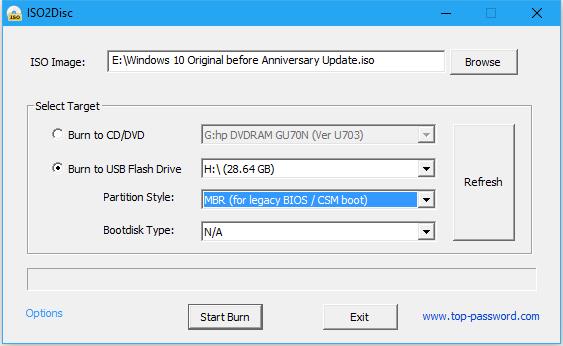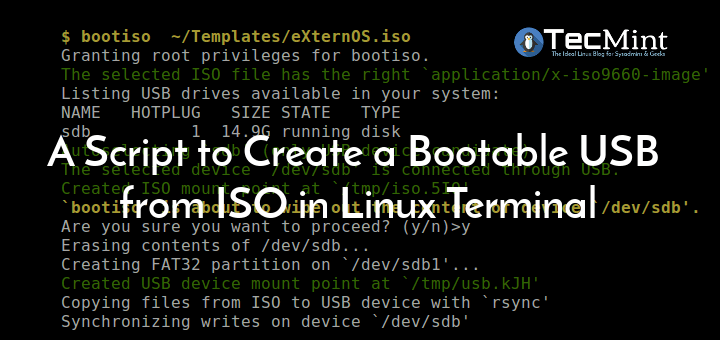

- Make a bootable usb from iso cmd install#
- Make a bootable usb from iso cmd archive#
- Make a bootable usb from iso cmd windows 10#
- Make a bootable usb from iso cmd software#
- Make a bootable usb from iso cmd windows 8#
Make a bootable usb from iso cmd archive#
Make a bootable usb from iso cmd windows 10#
It’s compatible with Windows XP, Windows Vista, Windows 7, Windows 8, Windows 8.1, Windows 10 plus the Windows Server editions (2003, 2008, 2012). Select the destination of your USB Drive at the Destination Drive fieldĮasy USB Creator 2.0 supports both USB 2.0 and USB 3.0.Browse the Windows XP ISO Image to load at the ISO File field.To burn Windows XP to a USB drive using Easy USB Creator 2.0, simply follow these steps: Using Easy USB Creator 2.0Įasy USB Creator can quickly convert the ISO images into bootable USB drives, with just a single click: You can create a bootable USB drive with Windows XP by following these instructions. You need to have the product (or license) key. If you don’t have the ISO image to create the bootable USB drive, you can download an official image from Microsoft’s website. If you need to use the repair tools of an original Windows installation CD/DVD, you can also use Easy Recovery Essentials and run Automated Repair to automatically find and fix boot errors.ĭownload Easy Recovery Essentials ISO image
Make a bootable usb from iso cmd install#
If the item doesn’t appear, you need to use the original Windows installation CD or DVD to install Windows or access the repair tools. You can try with the USB drive plugged-in and then boot into BIOS directly. If your BIOS menu doesn’t list a USB item in the BIOS settings, it may mean that it can’t boot from a USB drive. If you’re using a computer with Fast Boot option, make sure that Fast Boot is disabled. If you are using a new computer with UEFI/EFI, make sure that the Boot Legacy option is enabled: A Boot Device menu can look like this, depending on your computer model and Windows version: If a Boot Device menu doesn’t appear on your screen where the USB drive is plugged-in, check the BIOS/UEFI settings. To make sure that your BIOS/UEFI is configured to boot from a USB drive, follow our Boot from USB drive guide. The USB drive you want to make bootable should have at least 4 GB in available size.
Make a bootable usb from iso cmd software#


Make a bootable usb from iso cmd windows 8#
5 Create a Windows 8 / 8.1 bootable USB.4.2 If you have the installation disc (DVD).4.1.2 Using Windows 7 USB/DVD Download Tool.3.2 If you have the installation disc (DVD).3.1.2 Using Windows 7 USB/DVD Download Tool.2.2 If you have the installation disc (CD).


 0 kommentar(er)
0 kommentar(er)
